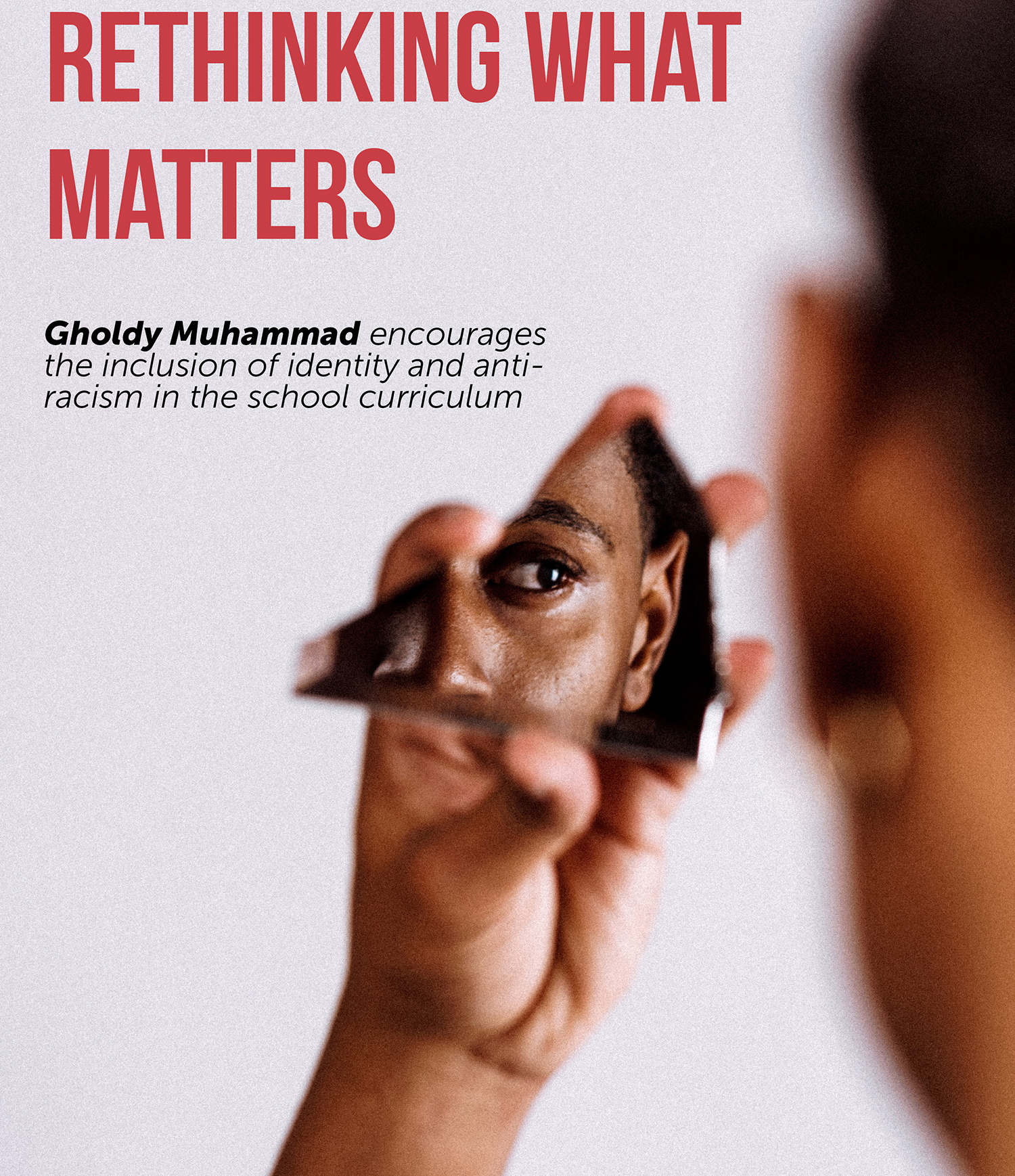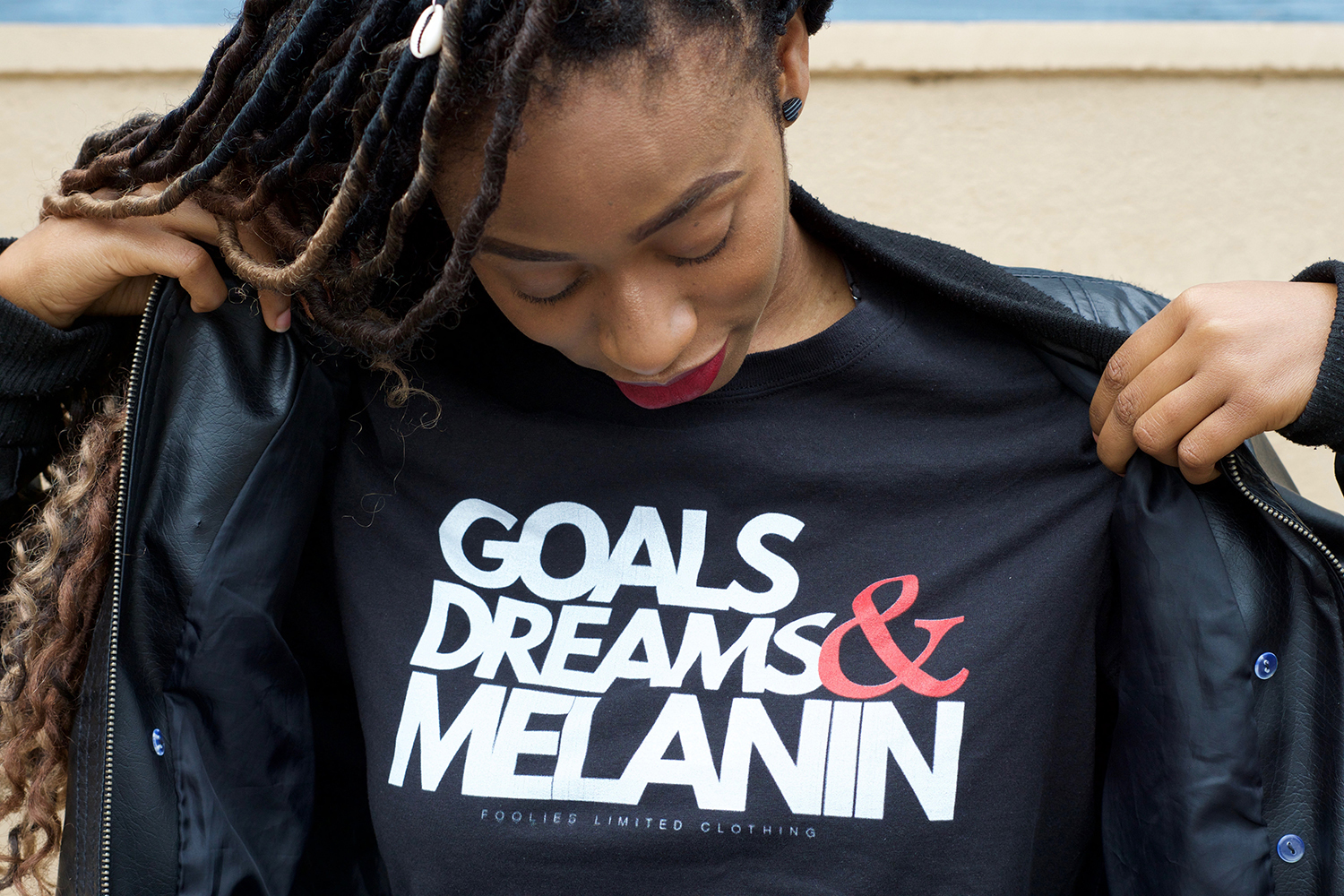

During my conversation with the high school leaders, we discussed ways to move toward creating a school that embodies anti-racism, inclusion, and equity. In our discussion, I suggested that the teachers make a more intentional and direct effort to set learning standards around identity throughout their unit plans and instruction. While the African American students were feeling marginalized in the incident, I wanted to know how their identities were being honored, legitimized, and celebrated every day throughout each class they attended. So, I asked the leadership these questions: How do your teachers help students to know themselves and others who are different than them? How do your teachers combat and resist the incomplete or negative representations that society has put on people of color?

Recently, I visited school principals at a fairly large-enrollment high school in the U.S. The leadership team was struggling with issues of equity and ways to create a school climate where Black and Brown students felt included, seen, and heard. The school had experienced a racist incident aimed at Black male students, incited by other students in the building. It left African American students and their parents feeling othered and marginalized in the school community. Unfortunately, this isn’t the first time I’ve engaged a group of educators to move toward elevating the importance of equity and anti-racism. Similar issues are sadly widespread in schools, especially for Black and Brown youth. Just in following Grinnell College’s work of mapping racial trauma in schools, we witness it happening far too often.
The room was silent. Had I posed questions about the teaching of skills or how teachers prepare students for the state test, I believe the teachers would have replied with a variety of responses. But the silence also said something.
I define identity as the complex and multidimensional layers of the self, including cultural, racial, linguistic, community, and personal. Identity is not easily captured, understood, or addressed. How do we define student identity in practice? Further, given the uneven times in which we live, teachers may feel even less inclined to teach in sensitive and thoughtful ways that acknowledge the identity of each student. My own teacher-education program certainly did not help me see my students as individuals with unique backgrounds, experiences, and perspectives when it came to the goal of writing curriculum.
Typically, teacher-education programs do not have anti-racism threaded throughout their courses, and consequently, teachers struggle with embedding such work in the curriculum. As a result, teachers may employ nonracist practices rather than anti-racist practices. The former may recognize that racism exists but does little to nothing to disrupt it, while the latter is actively teaching to interrupt and disrupt racism. This means emphasizing the identities of those who have been marginalized in the curriculum. New York Times bestselling author and leading scholar of racism Dr. Ibram X. Kendi agrees; he states:
What’s the problem with being “not racist”? It is a claim that signifies neutrality: “I am not a racist, but neither am I aggressively against racism.” But there is no neutrality in the racism struggle. The opposite of “racist” isn’t “not racist.” It is “anti-racist.” What’s the difference? One endorses either the idea of a racial hierarchy as a racist, or racial equality as an anti-racist. One either believes problems are rooted in groups of people, as a racist, or locates the roots of problems in power and policies, as an anti-racist. One either allows racial inequities to persevere, as a racist, or confronts racial inequities, as an anti-racist. There is no in-between safe space of “not racist.” (2019, p. 9)
Returning to my conversation with the high school leaders, after a brief period of silence, one teacher said to me that teaching identity and anti-racism is not the work of schools. He explained that, in his view, helping a child to know themselves, including the truths and histories of their lives and people who have come before them, is the job of parents and not teachers. He and I disagree.
What if students don’t have homes? What if students don’t have families to help them cultivate their sense of self? What if their homes teach falsehoods about race and perpetuate racism? Why can’t it also be the work of educators?
I didn’t want to imply to the leaders that schools or teachers created racism and other oppressions associated with identities. However, schools may perpetuate racism or ignore it, and that can be just as harmful.
During our conversation, I wondered why it can’t be our job, given the resources and the abundance of knowledge that is readily available to us. It should be the charge of everyone in society, including educators, families, politicians, artists, and writers. If we are sincere in our desire to create a better world for all and help youth become empathic, humanizing beings, we must focus on identity and sociopolitical consciousness in schools.
Research supports moving beyond skills and connecting learning to students’ lives and identities (Delpit, 2006; Fisher, 2009; Gay, 2002; Ladson-Billings, 1995; Paris, 2012). Yet we largely center skills-based test-prep learning, which is not enough. I strive to make a case for centering identity development and anti-racism in the learning that takes place at school with the following principles in mind:
- If students know who they are, they are less inclined to believe or consume stereotypes or other deficit comments.
- If students don’t know who they are, others may tell them, which may not always be positive. Identity and a strong sense of self are a refuge and protection in the world.
- Identity gives a child confidence in their life. When confidence is present, potential for greatness is heightened.
- If other students learn the truth and fullness about the histories of people of color, they are less inclined to project oppression upon their lives or speak falsehood.
- Oppression begins with ignorance of self and others. When we start with identity, it can help to shape a better world for all.

Teaching identity and anti-racism together helps to increase knowledge of self and the world in which we live. We typically teach what we know and have been taught ourselves. Teachers may struggle with how to respond to students’ identities and histories because they haven’t taken the time to really get to know students. As educators, if our own K–12 and higher education has been absent of certain histories, it calls for us to do the work and research and learn these histories today.
In one class I took on children’s literature, the histories of people other than Europeans were left out, which could leave one to assume that Black and Brown people did not have, write, or read children’s literature historically. But that is not the case. We don’t want our young people to think they don’t have an identity or history because teachers don’t connect it to the curriculum. In addition, mandates and sanctioned curriculum do not explicitly honor identity development, which means teachers need greater curricular support from leaders in order to teach in this way.
As a starting point, with lessons or units developed for instruction, teachers should ask themselves questions such as:
- How does the learning connect to the lives of students?
- How does the learning help students to learn something or affirm something about their identities?
- How am I teaching about the lives of others in more balanced and complete ways? Am I only including teaching about people of color steeped in pain or struggle?
- How can I create a space for students to learn about power, race, marginalization, disparities, and oppression in justice-centered ways?
In my book Cultivating Genius, I encourage teachers to set learning goals for identity and sociopolitical consciousness just as they would for skills related to the content. Often the pressure of tests pushes teachers to teach about social issues or the lives of students after all the state testing has been completed, as if this work isn’t serious or important. Rather, cultivating identity and sociopolitical consciousness is real and serious. We must not consider test results our ultimate goal for instruction. What matters is the lives and futures of our students and others they will interact with once they leave our schools. Silence on the issue cannot be our response.
When it comes to knowing self, others, and oppression, educators need to actively cultivate learners who are not only academically successful but also personally and sociopolitically conscious. This is what will disrupt falsehood and racism in society and spur policy makers and leaders to reframe learning standards and adopt consciousness-building curriculum where the authorship is diverse and offers seamless opportunities for students to understand themselves and others, while learning about race and racism. While research within the field of education has moved toward culturally responsive education, racial literacy, and anti-racist teaching, we don’t see reform in curriculum and instruction toward these ends. In addition to the work of policy makers and leaders, I also charge publishers to audit their materials and ask themselves what they are producing toward these ends.
This work is critical and calls for everyone in society to rethink what matters in schools beyond skills. We cannot live in silence, nor think it is just the responsibility of a few. It’s time for us collectively to set learning goals and teach curriculum that will create the better world in which we all desire to live.
References
Delpit, L. D. (2006). Other People’s Children: Cultural Conflict in the Classroom. New York: New Press.
Fisher, M. T. (2009). Black Literate Lives: Historical and Contemporary Perspectives. New York: Routledge.
Gay, G. (2002). “Preparing for Culturally Responsive Teaching.” Journal of Teacher Education, 53(2), 106–116.
Kendi, I. X. (2019). How to Be an Antiracist, first edition. New York: One World.
Ladson-Billings, G. (1995). “Toward a Theory of Culturally Relevant Pedagogy.” American Educational Research Journal, 32(3), 465–491.
Muhammad, G. (2020). Cultivating Genius: An Equity Model for Culturally and Historically Responsive Literacy. New York: Scholastic.
Paris, D. (2012). “Culturally Sustaining Pedagogy: A needed change in stance, terminology, and practice.” Educational Researcher, 41(3), 93–97.
Dr. Gholdy Muhammad is an associate professor of language and literacy at Georgia State University, as well as the author of Cultivating Genius: An Equity Framework for Culturally and Historically Responsive Literacy, published by Scholastic.





